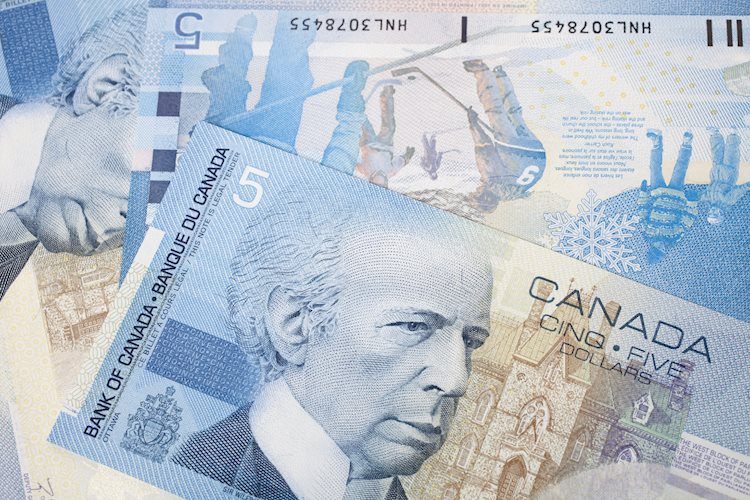- USD/CAD gains ground to around 1.4405 in Friday’s early Asian session.
- The hawkish rate cut by the Fed supports the USD.
- An unexpected downtick in the November Canadian CPI inflation reinforces expectations for more BoC modest rate cuts.
The USD/CAD pair gathers strength to near 1.4405 during the early Asian session on Friday, bolstered by the firmer Greenback broadly. Traders will keep an eye on Canadian October Retail Sales and US Core Personal Consumption Expenditures (PCE) Price Index data, which are due later on Friday.
The US Federal Reserve lowered the federal funds rate by 25 basis points (bps), bringing its target range to 4.25% and 4.50%. The latest Summary of Economic Projections (SEP), or “dot plot”, indicated the US central bank’s intention to reduce the number of interest rate cuts next year from four to just two quarter-percent reductions. This stance proved significantly more hawkish than market expectations, which boosts the US Dollar (USD) broadly.
On the other hand, a slowdown in Canadian Consumer Price Index (CPI) inflation in November fuelled the expectations that the Bank of Canada (BoC) will cut rates further in 2025, though the era of jumbo reductions may be over. This might weigh on the Canadian Dollar (CAD) and act as a tailwind for USD/CAD.
“Overall, the November inflation report was mixed—while headline CPI eased to 1.9% year over year, core measures showed some stickiness. We continue to expect the Bank of Canada to trim policy rates by 25 basis points in January and shift toward a more gradual approach to cutting rates in 2025,” said Rachel Siu, head of Canadian fixed income strategy at BlackRock.
Canadian Dollar FAQs
The key factors driving the Canadian Dollar (CAD) are the level of interest rates set by the Bank of Canada (BoC), the price of Oil, Canada’s largest export, the health of its economy, inflation and the Trade Balance, which is the difference between the value of Canada’s exports versus its imports. Other factors include market sentiment – whether investors are taking on more risky assets (risk-on) or seeking safe-havens (risk-off) – with risk-on being CAD-positive. As its largest trading partner, the health of the US economy is also a key factor influencing the Canadian Dollar.
The Bank of Canada (BoC) has a significant influence on the Canadian Dollar by setting the level of interest rates that banks can lend to one another. This influences the level of interest rates for everyone. The main goal of the BoC is to maintain inflation at 1-3% by adjusting interest rates up or down. Relatively higher interest rates tend to be positive for the CAD. The Bank of Canada can also use quantitative easing and tightening to influence credit conditions, with the former CAD-negative and the latter CAD-positive.
The price of Oil is a key factor impacting the value of the Canadian Dollar. Petroleum is Canada’s biggest export, so Oil price tends to have an immediate impact on the CAD value. Generally, if Oil price rises CAD also goes up, as aggregate demand for the currency increases. The opposite is the case if the price of Oil falls. Higher Oil prices also tend to result in a greater likelihood of a positive Trade Balance, which is also supportive of the CAD.
While inflation had always traditionally been thought of as a negative factor for a currency since it lowers the value of money, the opposite has actually been the case in modern times with the relaxation of cross-border capital controls. Higher inflation tends to lead central banks to put up interest rates which attracts more capital inflows from global investors seeking a lucrative place to keep their money. This increases demand for the local currency, which in Canada’s case is the Canadian Dollar.
Macroeconomic data releases gauge the health of the economy and can have an impact on the Canadian Dollar. Indicators such as GDP, Manufacturing and Services PMIs, employment, and consumer sentiment surveys can all influence the direction of the CAD. A strong economy is good for the Canadian Dollar. Not only does it attract more foreign investment but it may encourage the Bank of Canada to put up interest rates, leading to a stronger currency. If economic data is weak, however, the CAD is likely to fall.
Read the full article here

